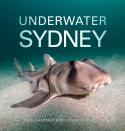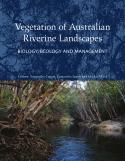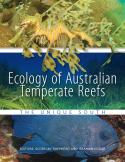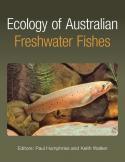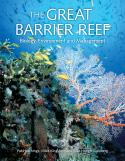Squat lobsters of the superfamilies Chirostyloidea and Galatheoidea are highly visible crustaceans on seamounts, continental margins, shelf environments, hydrothermal vents and coral reefs. About 1000 species are known. They frequently feature in deep-sea images taken by submersibles and are caught in large numbers by benthic dredges. Some species are so locally abundant that they form ‘red tides’. Others support a variety of important fisheries.
The taxonomy of squat lobsters has been intensively studied over the past few decades, making them one of the best known deepwater crustacean groups. As a result, they have attracted the attention of deep-sea ecologists who use them as proxies to test hypotheses about deepwater ecological processes and biogeography. Interest in squat lobsters now extends much more widely than the taxonomic research community and this work is a timely synthesis of what is known about these animals. The Biology of Squat Lobsters provides keys for identification and reviews the current state of knowledge of the taxonomy, evolution, life history, distribution, ecology and fisheries of squat lobsters.
A striking feature of squat lobsters is their vivid coloration, which is revealed in a selection of spectacular images of different species.
2012 Whitley Award Commendation for Invertebrate Natural History.
- Page 1Abstract
The external and internal morphology of the marine squat lobsters is reviewed. External morphology of squat lobsters has been extensively studied, primarily in the context of taxonomic research. The external morphology of the body and appendages is illustrated and described for each marine squat lobster family. The internal morphology of squat lobsters has not been recently studied in detail; studies to date primarily cover Galathea and some aspects of Munida. Thus, coverage of internal morphology is focused on Galathea and includes muscular, digestive, respiratory, circulatory, reproductive, excretory, nervous and endocrine systems. Although the internal anatomy is known in detail only for Galathea, the conservative body plan of marine squat lobsters suggests a general applicability to other squat lobster families. Owing to the paucity of recent studies of internal anatomy of squat lobsters, many of the illustrations used herein are cited from classical works, which, along with their descriptive remarks, will hopefully stimulate extensive future studies. Functional morphology of pereopod 5 and gonopods 1–2 is still poorly known, as is the internal morphology of sense organs and endocrine system.
- Page 39Abstract
The discovery and systematics of squat lobsters since Linnaeus described the first species in 1761 until modern times are reviewed. Recent re-interpretation of evidence of their external morphology and new phylogenetic analyses of molecular data from all taxa and other anomuran decapods, squat lobsters are now placed in two superfamilies, Chirostyloidea and Galatheoidea. The two superfamilies are not sister taxa. Chirostyloidea includes families: Chirostylidae, Eumunididae and Kiwaidae. Four families are included in Galatheoidea, three of squat lobsters, Galatheidae, Munididae and Munidopsidae, and one, Porcellanidae, the porcelain crabs. All superfamilies, families and genera are diagnosed and dichotomous keys to these taxa are provided.
- Page 73Abstract
The phylogeny and fossil record of the marine squat lobsters, Chirostyloidea and Galatheoidea, are reviewed. Until recently, marine squat lobsters, porcelain crabs (Porcellanidae), freshwater squat lobsters (Aeglidae) and the recently discovered ‘yeti crab’ (Kiwaidae) were thought to have a monophyletic origin because of their similar overall body form, and were grouped together as the Galatheoidea. Recent decades, however, have seen major advances in our understanding of squat lobster phylogeny. These have come through shifts in the methodological paradigm, from phenetics to cladistics, in addition to new and expanded datasets. The most recent major development recognises squat lobster polyphyly, indicating that separate clades of squat lobsters evolved from within the hermit crabs, warranting two independent marine superfamilies, Galatheoidea and Chirostyloidea. The squat lobster body form originated independently at least twice, once in the stem lineage of the Galatheoidea and once in the stem of the clade containing Chirostyloidea and Aegloidea. Moreover, the two marine superfamilies are each associated with a strongly carcinised group, and each is closely related to a separate clade of symmetrical hermit crabs (Pylochelidae). Galatheoidea, which include the crab-like porcelain crabs (Porcellanidae), are closest to a clade of pylochelid hermit crabs of the subfamily Pylochelinae. The Chirostyloidea and Aegloidea are closest to the crab-like Lomisoidea and, together with the asymmetrical Parapaguridae, are sister to the pylochelid subfamily Trizochelinae. Hence, the transition from a long-tailed symmetrical hermit crab to a crab-like form appears to have proceeded via an intermediate squat lobster-like form. The fossil record of the Chirostyloidea is currently restricted to a probable stem-lineage kiwaid, Pristinaspina gelasina, from the Cretaceous of Alaska. Given the palaeo- and modern distribution of kiwaids, Kiwaidae probably evolved along the eastern Pacific margin. The palaeo-localities of P. gelasina and the few known aeglid fossils support a Palaeo-Pacific rather than Tethyan origin for Chirostyloidea. The fossil record of Galatheoidea indicates a Jurassic Tethyan origin followed by broad expansion into the northern hemisphere by the Late Cretaceous, and a near-cosmopolitan distribution by the middle Tertiary. Most controversies in anomuran phylogeny have focused on hermit crabs, with the squat lobsters regarded as an uncontroversial, monophyletic group. However, the polyphyly revealed by cladistic analyses with clades rooted among other major anomuran taxa shows that, far from being peripheral to paguroid concerns, squat lobsters may prove central to under-standing the evolution of hermit crabs.
- Page 105Abstract
This chapter overviews embryonic and larval development of squat lobsters, as well as egg size, fecundity, larval dispersal and recruitment. Coverage of embryonic development is focused on Galathea and Munida, leaving extensive studies to be done on early cleavage and on other genera, especially those having large eggs. As in other decapod crustaceans, the larval development of squat lobsters is referable to either the ‘regular’ type or the ‘abbreviated’ type, reflected by egg size. Morphological characteristics of larvae and their changes during larval development are summarised for each genus. Additionally, a key to the first zoeae of squat lobster genera is provided. Larval dispersal and recruitment pattern of Munida gregaria, Pleuroncodes planipes and P. monodon are briefly mentioned in the context of early life history.
- Page 149Abstract
Knowledge of squat lobster diversity has grown rapidly during the past two decades and has now reached a level where it is possible to attempt a biogeographic synthesis. Squat lobsters of the superfamilies Galatheoidea and Chirostyloidea are now represented by more than 1000 species worldwide (c. 10% undescribed) across nearly all latitudes and depths; the potential for new species discoveries remains high. Patterns of global species richness indicate a distinct global centre of diversity in the tropical western Pacific between New Caledonia, Indonesia and the Philippines; progressively fewer species are recorded with increasing distance from this centre. This pattern holds for taxa in both superfamilies and across all depths, although a single unified centre of diversity is less obvious for lower slope and abyssal species (>2000 m) compared with their shallow-water relatives.
A search for broad-scale biogeographic patterns highlights the presence of at least 10 distinct regions (north-eastern, south-eastern, western Atlantic Ocean, Indian Ocean, central western, south-western Pacific Ocean, Kyushu-Palau/Bonin, French Polynesia, north-eastern and south-eastern Pacific Ocean) with further indications of localised faunas and possible high levels of endemism. Boundaries between regional assemblages and differences observed for separate depth strata may be linked to different historical events and/or present-day oceanographic characteristics such as ocean currents or impact of oxygen minimum zones. Ecological processes are highlighted that may play important roles in driving distributions, such as biological associations between squat lobsters and other organisms, or life history characteristics that influence dispersal ability. Significant diversifications into deep water and high latitudes are probably derived and provide a useful comparative framework to examine the evolution of the different groups of squat lobsters in the future.
- Page 183Abstract
Squat lobsters are conspicuous representatives of the benthic fauna in diverse marine environments. They may occur as solitary individuals or as dense benthic aggregations, sometimes associated with complex substrata. A few shallow-water species occur in massive pelagic swarms during a specific ontogenetic phase or during their entire life. These swarms are often associated with fronts or internal waves. In deep waters, the occurrence of squat lobsters is determined by the availability of food sources such as organic matter falls or seeps. Some squat lobster species oxy-regulate and can cope with low oxygen environments. This ability changes ontogenetically, with the oldest/ largest animals being best able to survive these extreme conditions. Air exposure as a consequence of fishing activities can cause physiological stress and increase mortality rates. Squat lobsters consume many different food resources, as suspension feeders, deposit feeders, algal grazers, scavengers, predators, and even occasional cannibals. They obtain carbon and nitrogen from different sources: photosynthetic, chemosynthetic or mixed. Feeding rates of squat lobsters vary on daily, seasonal and annual time scales, and oxygen consumption during digestion depends on the ingested food types. Squat lobsters play an important role as recyclers in many sedimentary ecosystems, either by re-incorporating organic matter into the food web or by producing highly nutritive faeces. Feeding on primary producers, bacteria or detritus, and being consumed by several top predators, squat lobsters represent a direct trophic shortcut in many marine food webs.
- Page 223Abstract
Squat lobsters are ubiquitous in many benthic habitats yet very little is known about their behavioural ecology. This chapter synthesises reports of agonistic and reproductive interactions of squat lobsters in order to understand the evolution of behavioural and reproductive traits. Squat lobsters often occur in dense aggregations where individuals frequently interact, but these interactions rarely escalate to higher levels of aggression. Ritualised behaviours may reduce the possibility of agonistic interactions and, if escalation occurs, autotomy can help to lower the risk of cannibalism. Reproduction in most studied species is highly seasonal, and larvae are usually released during periods of high primary production. Depending on environmental conditions, females may produce more than one brood during a reproductive season. Female squat lobsters mate during the intermoult phase and can incubate several consecutive broods without moulting in between. The main moulting period is usually after the reproductive season and starts slightly earlier in males than in females. Sexual dimorphism in body size and chela strength is suggestive of strong sexual selection: in shallow-water species males are usually larger and stronger than females, indicating that they compete for access to reproductive females. Present knowledge suggests the existence of two principal mating strategies: ‘pure search’, where males roam in search for receptive females, mating interactions are brief and the couple separates quickly after sperm transfer; and ‘search and defend’ where males guard reproductive females for extended periods before, and occasionally after, copulation. Each species usually adopts one mating strategy but initial observations suggest ontogenetic changes in male mating strategies for some species. A solid understanding of mating system evolution in squat lobsters requires better knowledge of the mating behaviours in different species and under different environmental scenarios (e.g. population densities). This information is considered particularly essential to achieve sustainable management of the populations of exploited species.
- Page 249Abstract
Some squat lobsters have adopted a symbiotic lifestyle and others colonised chemo-synthetic communities in the deep sea. Prior to 2010, 42 species of squat lobsters were reported to engage in putative partnerships with a variety of macro-invertebrates but most commonly with soft and black corals. Twenty-one species of Galatheoidea and 23 of Chirostyloidea are reported to establish some form of symbiotic association with other invertebrates. Thirty-three identified species of squat lobsters, most of them members of the Galatheoidea, are reported from chemo-autotrophic communities in the deep sea. Given the depth at which most squat lobsters occur, the paucity of information on many aspects of their lifestyle, life history, behaviour and ecology is not surprising.
- Page 271Abstract
Squat lobsters (members of the anomuran superfamilies Chirostyloidea and Galatheoidea) are known as hosts for a variety of symbiotic organisms, particularly parasites. One hundred and thirty-four of the approximately 930 described squat lobster species harbour 122 symbiont species from nine metazoan phyla, as well as protistan and bacterial taxa. The nonparasitic groups include at least 20 associate species, but further analyses are required to clarify many of the symbiotic relationships with squat lobsters for these taxa (Bacteria, Foraminifera, Mesomycetozoa, Ciliata, Cnidaria, Annelida, Mollusca and poecilasmatid barnacles). Records of nemerteans (or suspected nemerteans) found in association with ovigerous female squat lobsters are likely to be egg predators. Among the confirmed primary parasites of squat lobsters, 22 species of parasitic barnacles (Rhizocephala) and 71 species of parasitic isopods (Bopyroidea and Cryptoniscoidea) are known. A further 53 records of bopyrid isopods and 73 records of rhizocephalans are noted but not identified to species (or often even to genus) in the literature; most of these records were from squat lobsters not otherwise recorded as hosts for described parasites. Parasites in other phyla are few but include endoparasitic helminths (Nematoda, Nematomorpha and Platyhelminthes). In terms of trophic strategies, rhizocephalans, nematomorphans and platyhelminths are complete parasitic castrators and the parasitic isopods are partial parasitic castrators. Nematodes and trematodes are trophically transmitted parasites and use squat lobsters as intermediate hosts, but the importance of squat lobsters as intermediate hosts may be greatly underestimated due to insufficient worldwide sampling for parasites. In addition, many common parasitic taxa (e.g. coccidians, cestodes, acanthocephalans) are not currently known from, but likely occur in, squat lobsters. The best-studied squat lobster host species in terms of symbiont diversity are from European waters, the western Atlantic and the eastern Pacific, a pattern similar to that seen in other anomurans. The lower parasite diversity of the Indo-West Pacific region is presumably due to limited sampling, and many species are known only from single records in localities such as Indonesia and New Zealand. Species belonging to three genera of hyperparasites (a rhizocephalan and two cryptoniscoid isopods) have been found infecting bopyrid primary parasites of squat lobsters. The biology and life histories of most squat lobster parasites and symbionts, with the exception of rhizocephalans and some isopods, are poorly known. The information presented herein summarises the geographical distribution of squat lobsters as host species, prevalence of their parasites, shared evolutionary histories of hosts and parasites, and known host– parasite relationships.
- Page 297Abstract
Squat lobsters can be found worldwide, often in high abundance, which makes them a potentially commercial fishery resource. Despite this favourable situation, well-established fisheries are currently found exclusively in Latin America, especially in Chile. Other countries (Argentina, Mexico, New Zealand) have intensively studied the ecology of squat lobsters and recognised their potential as a fishery resource but, for various reasons, no commercial exploitation has been implemented so far. We compiled available information about target species, fishing methods, fishery statistics and management as well as by-catch of squat lobster fisheries in Central American countries and Chile. Target species are Pleuroncodes monodon and P. planipes in Costa Rica, El Salvador, Nicaragua and Panama, and in Chile, P. monodon and Cervimunida johni. Finally, we present a brief compilation of information about squat lobsters in other countries, where these decapods are recognised as a potential fishery resource.






